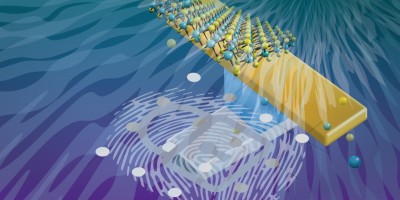The positive benefits afforded by the widespread use of plastics need to be reconciled with negative impacts on the environment and health across the entire plastics life cycle. Optimizing the balance in several facets of plastics production, use and waste management is necessary for a more sustainable relationship with these materials in the Anthropocene.

References
Mitrano, D. M., Wick, P. & Nowack, B. Placing nanoplastics in the context of global plastic pollution. Nat. Nanotechnol. 16, 491–500 (2021).
Rillig, M. C., Kim, S. W., Kim, T.-Y. & Waldman, W. R. The global plastic toxicity debt. Environ. Sci. Technol. 55, 2717–2719 (2021).
Wagner, M. in Microplastic in the Environment: Pattern and Process (ed. Bank, M. S.) 333–352 (Springer International Publishing, 2022).
Lambert, S. & Wagner, M. Environmental performance of bio-based and biodegradable plastics: the road ahead. Chem. Soc. Rev. 46, 6855–6871 (2017).
Cywar, R. M., Rorrer, N. A., Hoyt, C. B., Beckham, G. T. & Chen, E. Y.-X. Bio-based polymers with performance-advantaged properties. Nat. Rev. Mater. https://doi.org/10.1038/s41578-021-00363-3 (2021).
Geyer, R., Jambeck, J. R. & Law, K. L. Production, use, and fate of all plastics ever made. Sci. Adv. 3, e1700782 (2017).
Lau, W. W. Y. et al. Evaluating scenarios toward zero plastic pollution. Science 369, 1455–1461 (2020).
Law, K. L. & Narayan, R. Reducing environmental plastic pollution by designing polymer materials for managed end-of-life. Nat. Rev. Mater. https://doi.org/10.1038/s41578-021-00382-0 (2021).
Kümmerer, K., Clark, J. H. & Zuin, V. G. Rethinking chemistry for a circular economy. Science 367, 369–370 (2020).
Mitrano, D. M. & Wohlleben, W. Microplastic regulation should be more precise to incentivize both innovation and environmental safety. Nat. Commun. 11, 5324 (2020).
Acknowledgements
D.M.M. was funded by the Swiss National Science Foundation (grant number PCEFP@_186856).
Author information
Authors and Affiliations
Corresponding author
Ethics declarations
Competing interests
M.W. is an unremunerated member of the Scientific Advisory Board of Food Packaging Forum and has received travel funding to attend annual board meetings. D.M.M. declares no competing interests.
Additional information
Related links
Principles of green chemistry and engineering: https://www.acs.org/content/acs/en/greenchemistry/principles.html
Rights and permissions
About this article
Cite this article
Mitrano, D.M., Wagner, M. A sustainable future for plastics considering material safety and preserved value. Nat Rev Mater 7, 71–73 (2022). https://doi.org/10.1038/s41578-021-00406-9
Published:
Issue Date:
DOI: https://doi.org/10.1038/s41578-021-00406-9
- Springer Nature Limited
This article is cited by
-
Plastics can be used more sustainably in agriculture
Communications Earth & Environment (2023)
-
Eco-packaging in organic foods: rational decisions or emotional influences?
Organic Agriculture (2023)
-
Potential impacts of atmospheric microplastics and nanoplastics on cloud formation processes
Nature Geoscience (2022)


